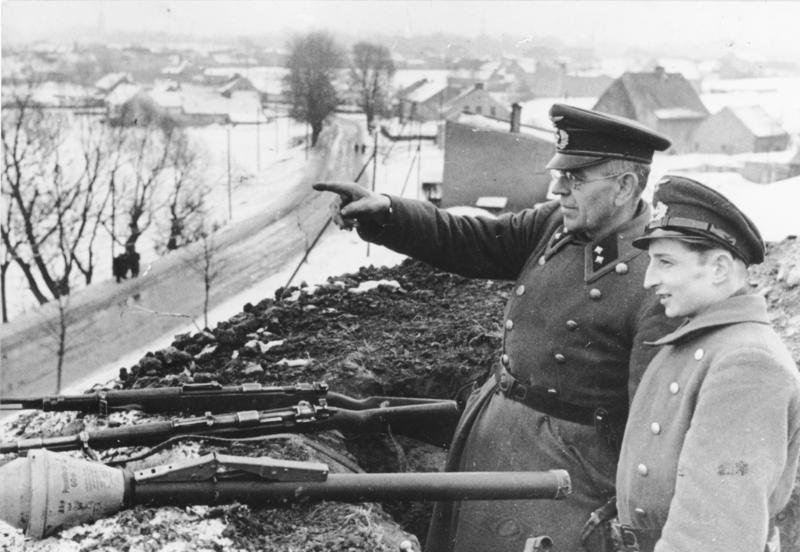Panzerfaust 60
From the Collection: A replica of a German disposable anti-tank weapon from the Second World War
As the Second World War dragged on the need for infantry anti-armor capability grew, with countries scrambling to replace the outdated anti-tank rifles they were issuing and designing and issuing various munitions launcher designs. The most successful of these was the American Bazooka, a simple tube with an electric firing system for a 60mm shaped charge rocket. The British tried another approach with the Projector, Infantry, Anti-Tank, or PIAT, which was a spring loaded grenade launcher. The Germans reverse engineered the Bazooka, creating the 88mm RPzB 54 Panzershreck launcher in 1943. Despite this, the Germans had their sights set a cheaper, lighter and simpler design.
The rigger of the weapon in the safe positon. The front sight is held down by a pin, and in so doing prevents the trigger from being depressed. Note also the warning about backblast printed on the rube
With design work beginning in 1942, the Faustpatrone (Fist-Cartridge) was a light, disposable recoilless rifle consisting of a shaped charge warhead attached to a tube filled with compressed black powder. The warhead was not independently propelled, instead arcing out of the tube with the blast of the ignited powder, with simple spring steel fins extending to stabilize it in flight. The Faustpatrone was capable of penetrating 5 inches of steel armor at 30 meters.
The sight in the extended position. A simple post on the top of the warhead is alligned with the corresponding aperture and the trigger depressed, igniting the black powder charge in the tube and launching the warhead
The Faustpatrone would soon be developed further into a more potent weapon, renamed the Panzerfaust (Tank Fist), and was issued in four basic models: the Panzerfaust 30, 60, 100 and 150, with the numbers indicating effective range. The Panzerfaust 60 replicated here was the most commonly encountered type, and was capable of penetrating up to 200mm (about 7.75 inches) of armor at up to 60 meters.
The Panzerfaust was both extremely simple to operate and inexpensive, as well as being light enough for average soldiers to carry them with little difficulty when needed. When fired the weapon produced a six foot backblast, creating a large smoke cloud from its black powder propellent, and its warhead featured a hollow nose and an inverted cone shaped charge explosive. This would generally leave a small hole under an inch in diameter, while killing or wounding the tank crew with blasts of fire and shrapnel inside their vehicle.
The warhead when removed from the tube. The stabilizing fins spring out when clear, and the label with instructions and a picture of the proper way to fire the weapon are also visible here
Panzerfaust variants began to appear in quantity in the summer of 1944, and by early 1945 the weapons were accounting for the majority of Allied tanks destroyed by German ground forces. This may, however have been more due to a lack of other German anti-tank weapons in the later stages of the war. The Panzerfaust in that regard proved quite effective at providing a cost-effective means for neutralizing enemy tanks as the supply situation became increasingly desperate for the Germans. In the final stages of the war, the Volkssturm, a militia raised mainly from elderly men and children to defend what little remained of the Reich, were commonly armed with Panzerfausts and sent out into the ruins to engage tanks, notably during the Battle of Berlin. This would result in Allied forces increasing infantry defense for tanks, especially those operating in urban areas, as a countermeasure.
A young soldier of the Volkssturm on the Eastern front in 1945 with a Panzerfaust alongside his rifle (German Federal Archives)
The concept of a disposable infantry anti-tank weapon would outlive the Panzerfaust, with the US M72 LAW and AT4 launchers seeing service into the 21st century. The weapon would also be used by the Soviets to aid in the development of their RPG systems after the war, in conjunction with captured German and supplied American rocket launchers.
The Panzerfaust 60 seen here in the collection is an inert replica, produced for IMA-USA.




